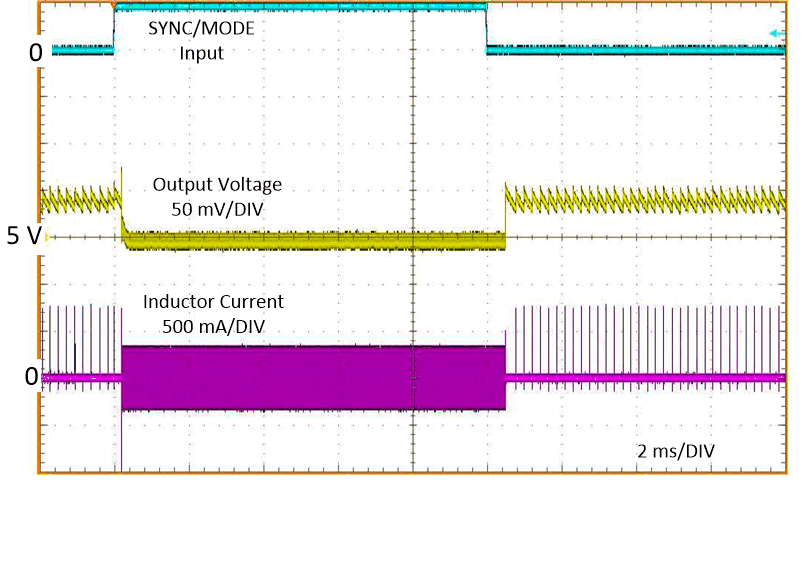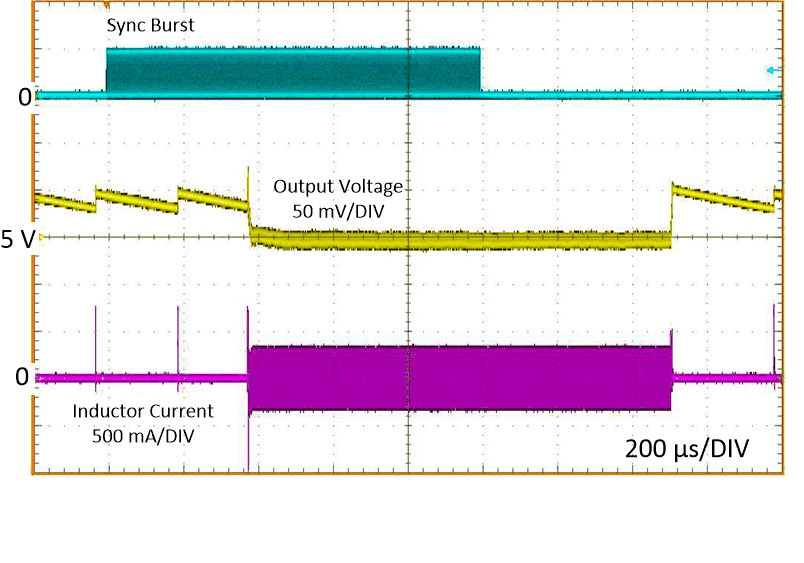JAJSMA0A July 2020 – July 2021 LM63610-Q1
PRODUCTION DATA
- 1 特長
- 2 アプリケーション
- 3 概要
- 4 Revision History
- 5 Device Comparison Table
- 6 Pin Configuration and Functions
- 7 Specifications
- 8 Detailed Description
- 9 Application and Implementation
- 10Power Supply Recommendations
- 11Layout
- 12Device and Documentation Support
- 13Mechanical, Packaging, and Orderable Information
パッケージ・オプション
メカニカル・データ(パッケージ|ピン)
サーマルパッド・メカニカル・データ
発注情報
8.4.2.1 Sync/FPWM Operation
The forced PWM mode (FPWM) can be used to turn off AUTO mode and force the device to switch at the frequency programmed by the RT pin, even for small loads. This has the disadvantage of lower efficiency at light loads.
When a valid clock signal is present on the SYNC/MODE input, the switching frequency is locked to the external clock. The device mode is also FPWM. The mode can be changed dynamically by the system. See Figure 8-7 and Figure 8-8 for typical examples of SYNC/MODE function changes.
 Figure 8-7 Typical Transition from FPWM to AUTO Mode VIN = 12 V,
VOUT = 5 V, IOUT = 1 mA
Figure 8-7 Typical Transition from FPWM to AUTO Mode VIN = 12 V,
VOUT = 5 V, IOUT = 1 mA Figure 8-8 Typical Transition from Sync Mode to FPWM Mode VIN = 12 V,
VOUT = 5 V, IOUT = 1 mA
Figure 8-8 Typical Transition from Sync Mode to FPWM Mode VIN = 12 V,
VOUT = 5 V, IOUT = 1 mA